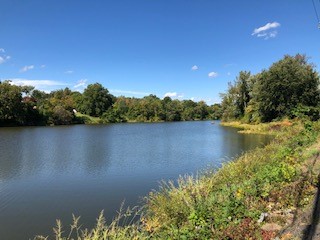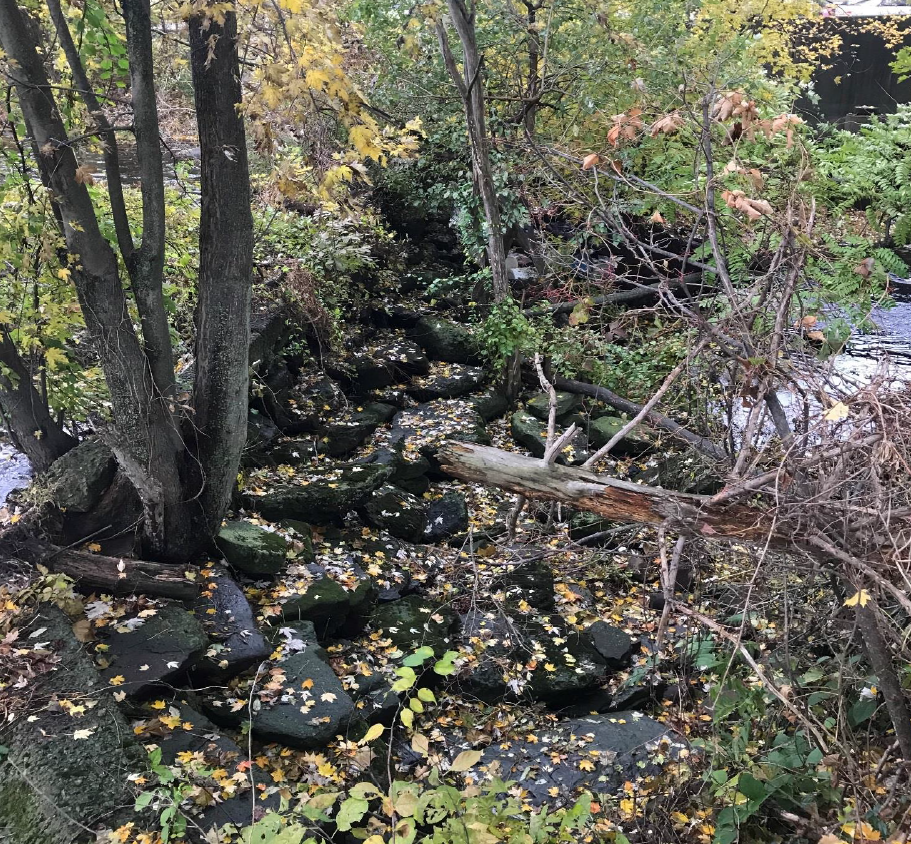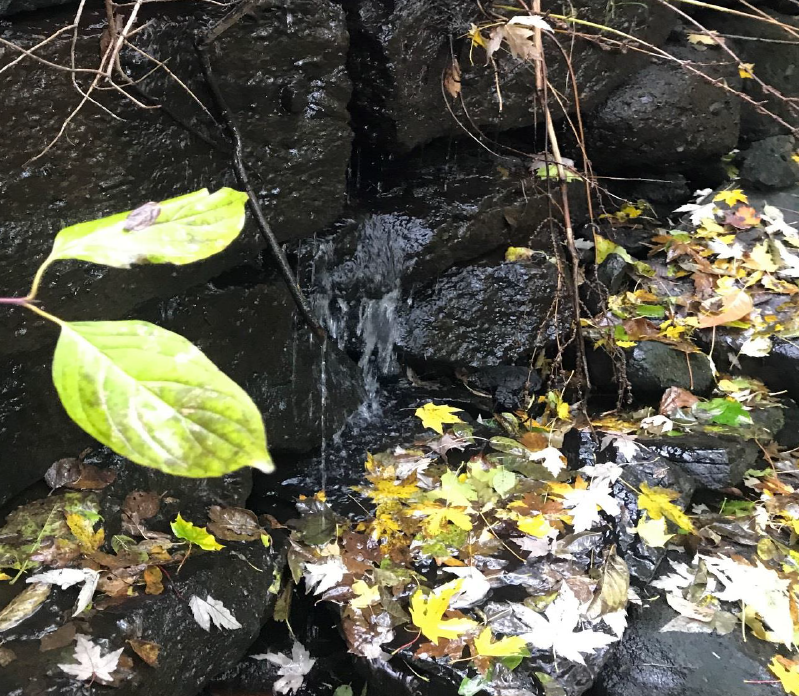
Photo credit: Mary-Ellen Sutton
What will happen to Pameacha Pond? 4 years have passed since Connecticut’s Department of Energy and Environmental Protection (DEEP) and the city of Middletown signed a consent order in August 2018 requiring the relocation of a main sanitary sewer line from the dam’s discharge culvert and the repair of the Pameacha dam. For decades, DEEP had expressed concern about deterioration of the dam, but when another break (like numerous previous ones) in the sewer line in June 2018 resulted in the discharge of raw sewage into Long Hill Brook, DEEP required the city to take certain steps leading to the repair of the dam.
DEEP generally recommends dam removal to allow fish migration and restoration of the water flows that existed before dams were constructed. Several city officials have stated that, based on DEEP’s 2018 recommendation to remove the dam, the pond was studied, and a conceptual plan developed, to replace the pond with a park surrounding a running brook. This prospect of dam removal and the plan for a park were not presented to the public.
When those plans recently became known, a strong community protest arose in the form of the “Save Pameacha Pond” movement. The goal of those involved is to oppose removal of the dam and to urge repair or replacement of the dam so that the pond will remain more or less in its present form. It is understandable that the pond, its wildlife, and its water views are extremely important for residents of the neighborhoods that developed around the pond over the past 200 years.
Since this protest movement arose, DEEP officials in the dam safety and fisheries divisions have emphasized that they are not urging the city to remove the dam. These officials have stated that fish migration would not be enhanced by dam removal, since other obstructions exist downstream and upstream from the dam. The future of the dam (removal or repair) rests entirely with the City. But the dam must be repaired or replaced because sudden failure could endanger property downstream, not to mention the possible release contaminated sediment that is now contained behind the dam. A report on the dam’s condition submitted to the city by Prime Engineering in January 2019 proposed construction of new spillway and new dam just downstream from the existing dam.

Photo from January 2019 dam inspection report by Prime AE Group. Trees growing on the dam have compromised the structure.

An active leak is shown in this photo from the January 2019 inspection report by Prime AE Group.
At a meeting of ECoin (the Environmental Collective Impact Network) on September 26, Mayor Ben Florsheim stated that the city has not decided whether to remove the dam or repair or replace it. The Mayor said, “The city is committed to an open community conversation to determine what is best for the neighborhood around Pameacha Pond, for the environment, and for the city as a whole.” The Mayor went on to say that, while dam repair or replacement will be expensive, so will the construction and maintenance of a park to replace the pond. Director of Public Works Chris Holden said he would make available both the report on the dam’s current condition and the report on the environmental assessment of the pond itself.
In late October or early November, the Jonah Center will host a community Town Hall on Zoom where information and views on these matters can be expressed and heard. There are voices in the community that support dam removal and restoration of the original watercourse. As soon as we obtain the above-mentioned reports and settle on a date and time with the presenters, we will announce the specifics in this post, through our newsletter, and through other media. To subscribe to the Jonah Center newsletter, go to the upper left side of our home page.













